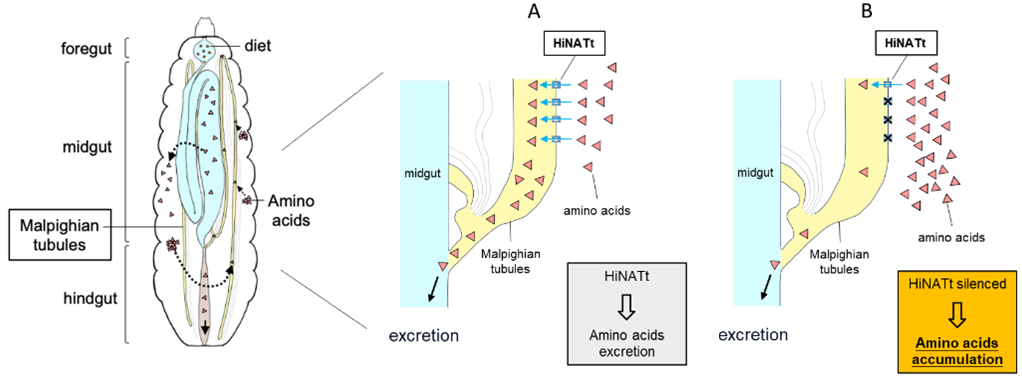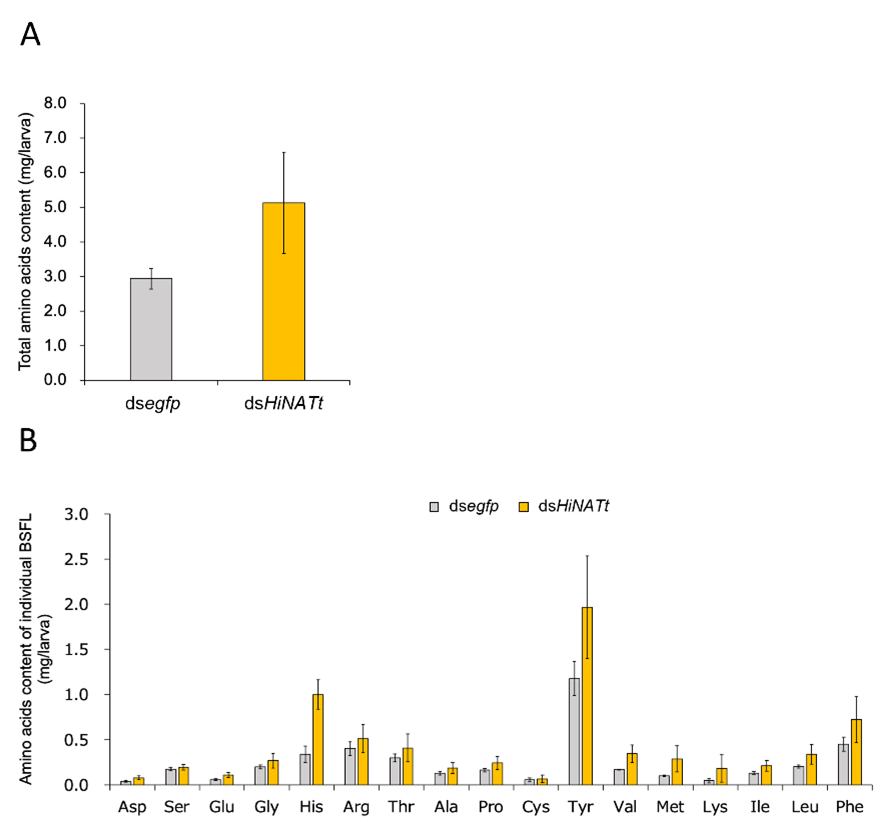The larvae of the black soldier fly (Hermetia illucens, BSFL) are emerging as a promising alternative protein source for poultry and aquaculture feeds. However, a key challenge has been their inability to meet the requirements for certain essential amino acids that are crucial for the nutrition of farmed fish. A research group from NARO and the University of Tokyo has developed a method to enhance the amino acid levels in black soldier fly larvae by suppressing their amino acid excretion. This innovative technology lays the foundational approach for replacing fishmeal protein with insect-derived protein sourced from domestic food and agricultural residues, contributing to a stable food supply and sustainable food production through resource recycling.
Overview
The black soldier fly larvae (BSFL) is gaining global attention due to their ability to convert various organic waste, such as food and agricultural residues, into high-quality protein. Currently, BSFL is being used domestically as a protein substitute in poultry and aquaculture feeds. However, a major limitation has been the insufficient levels of certain essential amino acids, such as histidine and methionine, which are vital for optimal nutrition.
A research team from NARO and the University of Tokyo has developed a novel technology to accumulate high concentrations of amino acids in BSFL. Some of the amino acids consumed by BSFL are not retained in the body but are lost through excretion (Fig. 1A). By suppressing the expression of the HiNATt gene, which regulates excretion, the researchers successfully increased the total amino acid content in BSFL by 1.8 fold and enhanced the levels of histidine and methionine by over 2.5 fold (Fig. 1B, Fig. 2A and 2B).
These findings could contribute to the development of a BSFL strain with significantly improved nutritional value for use as feed. In addition, the development of the BSFL industry is expected to secure a new domestic protein source, improve the self-sufficiency in feed production, and contribute to a stable food supply and sustainable food production in Japan.


Publication
Liu CM, Uehara T, Shimoda M. (2024) Enhancing the nutritional value of black soldier fly larvae through the nutrient amino acid transporter suppression in the excretion system. Journal of Insects as Food and Feed 11/1/2024 publish online. https://dx.doi.org/10.1163/23524588-00001155
Funding
This research is conducted under the Moonshot R&D Program for Agriculture, Forestry and Fisheries project "Development of Insect-Based Sustainable Food Production Systems for Global Food Security and Human Space Exploration" (JP009237) and funded by the Bio-oriented Technology Research Advancement Institution (BRAIN).
Patent 7411277: Insects and insect production method
| For Inquiries |




